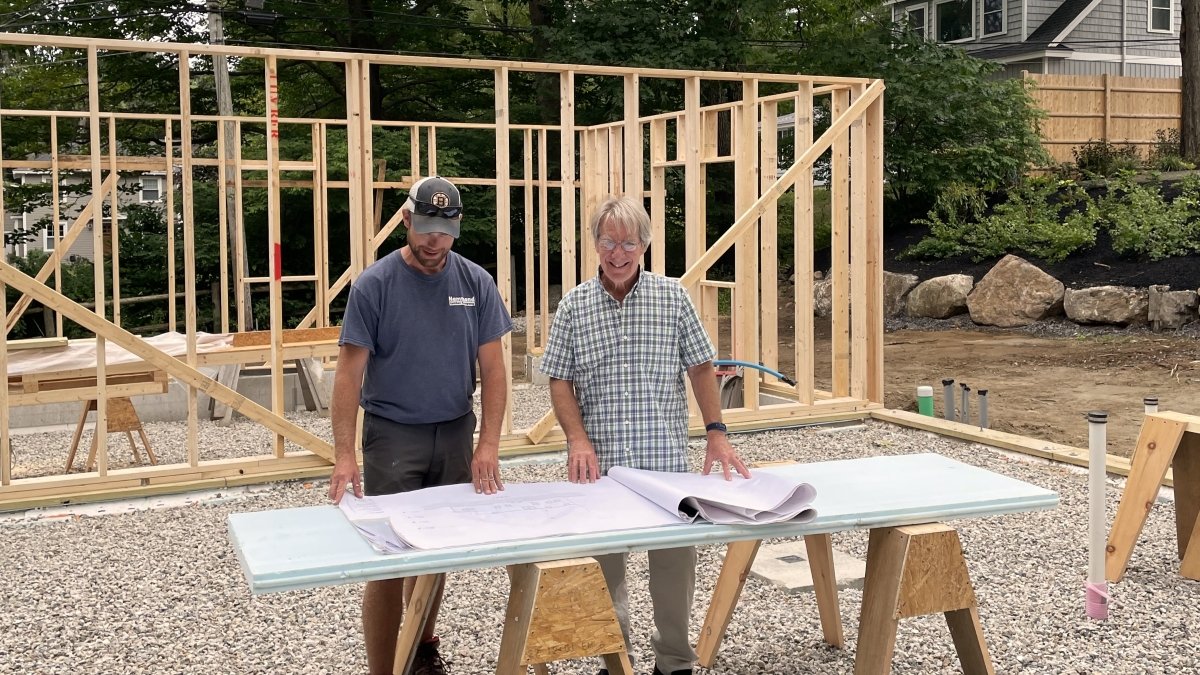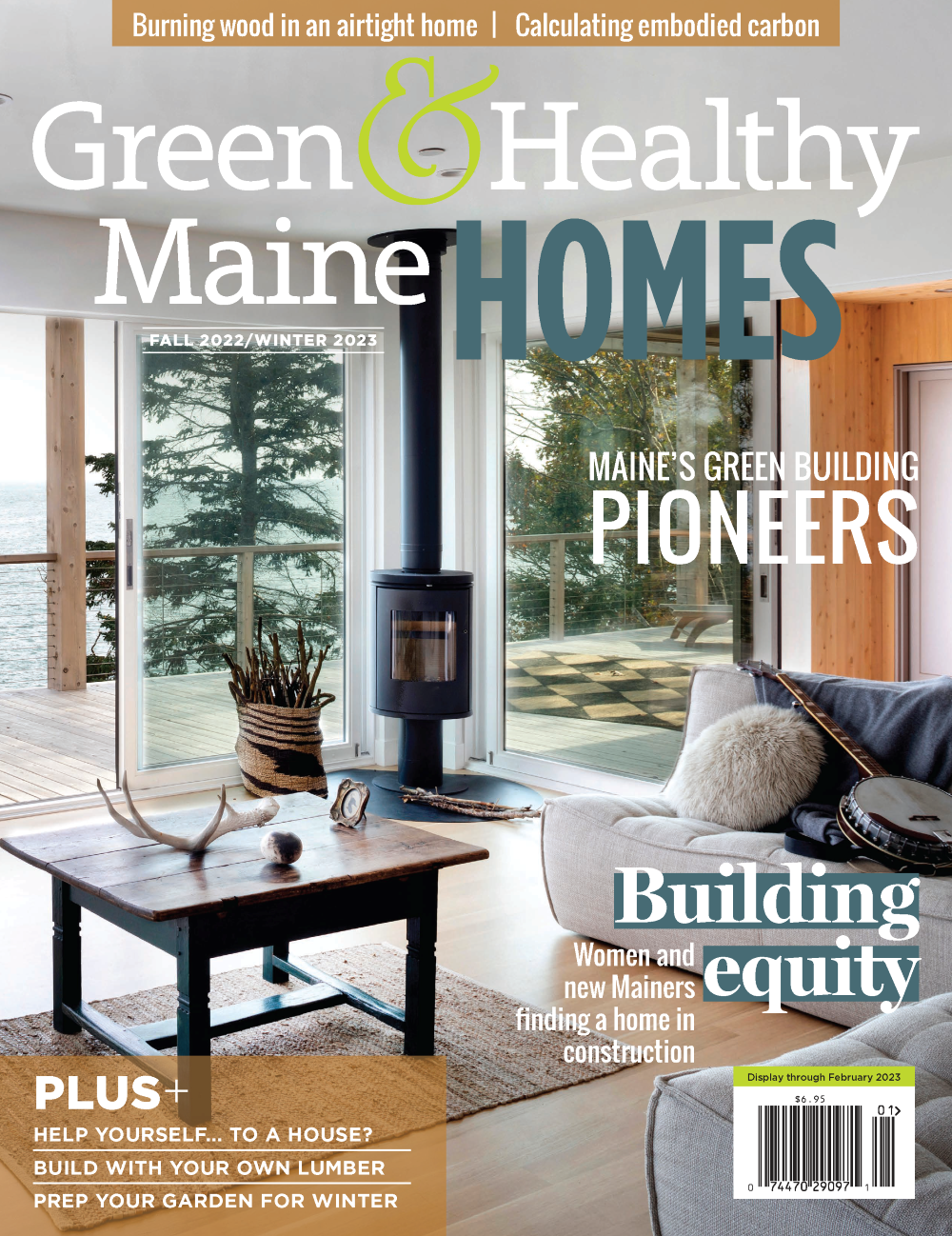Peter Taggart
Peter Taggart | Maine’s green building pioneers
Photo: Elise Klysa
FOR DECADES, Peter Taggart has dedicated himself to green building and educating others about it too.
A childhood maker and fixer of things, he also benefited from the good trade shops and teachers available in his suburban Boston high school. He hitchhiked to Maine the day after he graduated in 1974 and started to work in construction, went back to Massachusetts a few years later to study architecture, engineering and business, then returned to Maine and has worked to build healthy, high-performance homes ever since.
From early on, Taggart has been a proponent of self-sufficient, sustainable, decentralized energy, and when the 1970s energy crisis hit and buildings started to be constructed tighter, he started studying indoor air quality and building composition. Thanks to what he learned from building science luminaries like Joe Lstiburek and John Straub, Taggart started applying these principles to his own work, becoming an early adopter of new methodologies and technology.
Taggart has also shared his time and expertise with a dizzying array of organizations, including the Maine Chapter of the U.S. Green Building Council (USGBC), Northeast Sustainable Energy Association, and the nonprofit Maine Housing and Building Materials Exchange. He’s also been a member of the USGBC Regional Council, served as a Residential Green Building Advocate, and been a guest speaker at a host of national, regional and local green building conferences.
High-performance architect Chris Briley served with Taggart on the founding board of the Maine Chapter of the USGBC and has long admired his “steady, experienced determination” and the way he’s stuck to his guns. “A couple of decades ago or so, if you proclaimed that you did ‘green building,’ it was considered fringy and boutique,” Briley says. “You effectively pigeon-holed yourself, yet Peter did this proudly. He always believed that green houses were simply better—and said so. Peter has always been a leader. He had an established company fully committed to sustainability [Taggart Construction], while others were only willing to do a house or two, or just dabble in the concepts. He has always led by example. His company was the first to design and build a LEED-certified house in the United States, which was a huge deal back then! It took real commitment to prove that you were building green and do all the necessary paperwork. And he made Maine proud when he did it.”
Note: the following interview has been edited for clarity and length.
What was the green building landscape like when you were first starting out?
Green was just a color. Few people in the design and building field knew what I was talking about. This often created an extra barrier to getting work, especially with risk-averse designers, who were hesitant to use dense-pack cellulose, for example, fearing it would be a fire hazard, absorb moisture, or wouldn’t dry out.
What do you think have been your greatest accomplishments?
I have tried to share my own knowledge and work with others to advance knowledge in practical building science for residential buildings. I have trained a lot of people and always supported employees leaving to start their own green building businesses. All of the new homes we’ve built have achieved the highest rating from the EPA’s ENERGY STAR® for Residential New Construction program. In 2005, one of our homes became the first LEED-certified home in the country and was featured in an exhibition at the Museum of Natural History in New York City.
Photo: Elise Klysa
How have you seen the field evolve over the years?
There is better general knowledge of some aspects of green and healthy, high-performance buildings, especially amongst the mechanical and electrical trades. Insulators are providing more options to builders and homeowners. The design community has moved from being mostly skeptics to being mostly greener. There has been much greater access and availability (pre-pandemic) to greener and healthier building products.
What changes would you like to see in the field?
Much more trades education. More consumer education. Licensing of home builders and residential contractors. The new building and energy codes are encouraging, and we need training and enforcement to get the best value from them.
What advice would you give someone who wants to go into this green building today?
Learn building science and get a good basic knowledge of all relevant trades. Then focus one or two of interest and look for opportunities to get hands-on experience.
What do you think is the biggest challenge in Maine in the housing sector today?
Lack of builder licensing and training. Almost anyone can swing a hammer; not everyone can build a good house.
If people want to educate themselves about green building, what resources do you recommend?
Read Green & Healthy Maine HOMES magazine. Subscribe to Green Building Advisor (greenbuildingadvisor.com) and BuildingGreen (buildinggreen.com).
How can we create more inclusive opportunities and environments in the building trades?
Job training and certifications for all building trades.
Is there anything else you’d like to comment on?
I think we need to look at the ownership and financing of residential structures in our country. Perhaps encourage longer-term priorities and investments through longer-term financing, so the marginal costs of high-performance, durable and healthy homes have more value to owners and buyers. I’m not sure how this would work, but perhaps we could create a way to provide loans for long-term value improvements that would stay with the property even if it changed hands.
Peter Taggart and Taggart Construction’s Lead Carpenter, Daykin Marini on a job site in Cumberland, Maine in the summer of 2022. Courtesy photo.
This article appeared in the Fall 2022 edition of Green & Healthy Maine HOMES. Subscribe today!
Find Maine experts that specialize in healthy, efficient homes in the Green Homes Business Directory.









